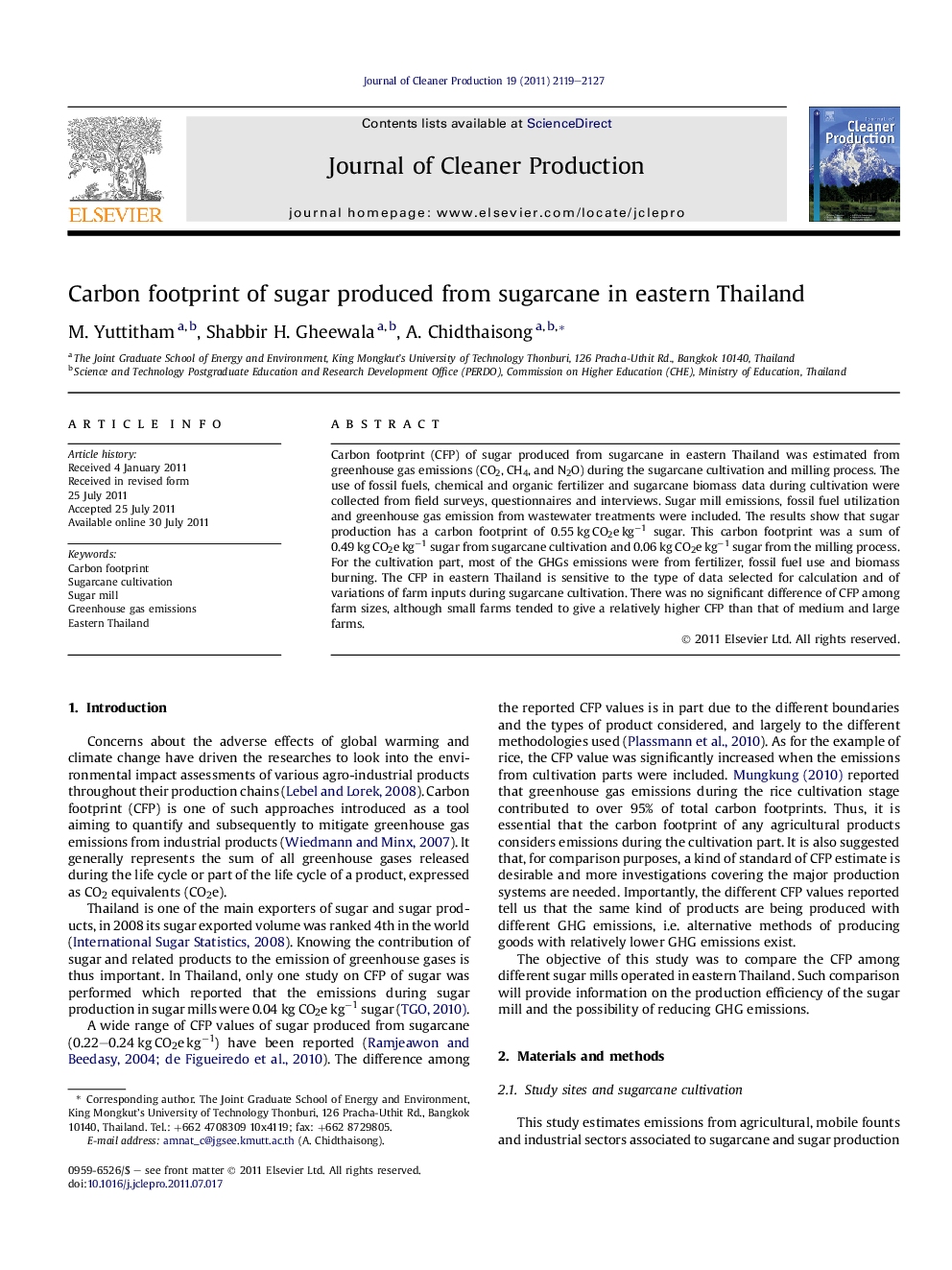| Article ID | Journal | Published Year | Pages | File Type |
|---|---|---|---|---|
| 1745940 | Journal of Cleaner Production | 2011 | 9 Pages |
Carbon footprint (CFP) of sugar produced from sugarcane in eastern Thailand was estimated from greenhouse gas emissions (CO2, CH4, and N2O) during the sugarcane cultivation and milling process. The use of fossil fuels, chemical and organic fertilizer and sugarcane biomass data during cultivation were collected from field surveys, questionnaires and interviews. Sugar mill emissions, fossil fuel utilization and greenhouse gas emission from wastewater treatments were included. The results show that sugar production has a carbon footprint of 0.55 kg CO2e kg−1 sugar. This carbon footprint was a sum of 0.49 kg CO2e kg−1 sugar from sugarcane cultivation and 0.06 kg CO2e kg−1 sugar from the milling process. For the cultivation part, most of the GHGs emissions were from fertilizer, fossil fuel use and biomass burning. The CFP in eastern Thailand is sensitive to the type of data selected for calculation and of variations of farm inputs during sugarcane cultivation. There was no significant difference of CFP among farm sizes, although small farms tended to give a relatively higher CFP than that of medium and large farms.
